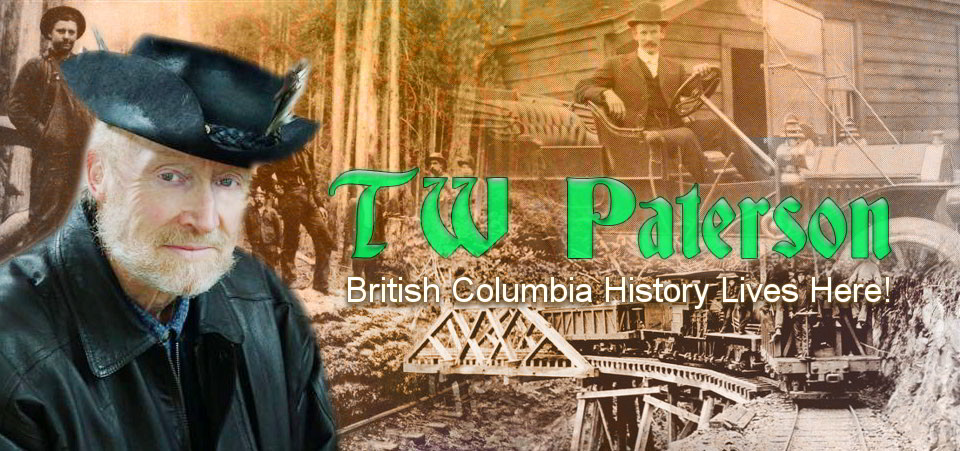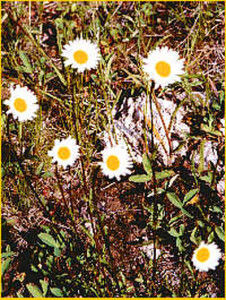It’s June and they’re ba-c-c-k! Ox-eye daisy, that is

Okay, it’s pretty. But there are zillions of them out there, thanks to the Pimburys.
Legacy.
It can be all things to all people, I suppose, and take all shapes and sizes, be they physical fact or less tangible. If measured in terms of human achievement, it’s nice to be (fondly) remembered after our brief visit on this mortal plane.
The pioneering brothers John, Phillip, Augustus and Edwin Pimbury certainly left their collective mark. They, and Augustus’ wife Ellen, are still with us in the Cowichan Valley, by the way, taking their deserved rest in St. Peter, Quamican cemetery.
Their Cobble Hill property is still with us, too, albeit much reduced in size and transmogrified by more than a century of changes.
But that’s not where their achievement lies nor why they’re remembered
Oldtime Cobble Hill chronicler Nathan P. Dougan referred to the Pimburys at least four times in his reminiscences first published in newspaper form in the 1950’s and ’60s, then by son Robert as the highly collectible book, Cowichan My Valley.
Nathan recounted how the brothers came to B.C. from Gloucestershire, Eng. in 1856 and, after an unsuccessful stint in the Cariboo gold fields, to Cowichan. It may have been as early as 1962 that they pre-empted 400 acres west of Cobble Hill (mountain) on what became Thain Road, named for a subsequent owner.
Much of their homestead was marshland, topped by rich black humus, Dougan wrote. This “accumulation of ages” was overgrown with alder, cascara and wild crabapple, and the land’s agricultural potential was so obvious that the brothers, eager to sow and to harvest, drained and fenced about 80 acres.
In their hurry to clear the land, however, they fired the marsh “in the hot dry season, consuming thereby much of the rich black topsoil, an expeditious process they were to regret…”
When their crude log cabin burned, they built a-new, this time a frame house with lumber hauled by horse and wagon from Sayward’s Mill in Mill Bay. For all that, it “was a small house of the simplest construction,” Dougan recalled from his childhood memory, with outer walls of clapboard, the inside walls of undressed planking papered with English newspapers.
They constructed equally modest outbuildings for their hay, a few head of cattle and small flock of sheep, planted hop vines along a cedar rail fence and, a “little aside from the house and below it, they planted apple and pear trees of a sort whose fruit was sour and hard and seemed not to ripen. And standing alone here, too, was a great cherry tree whose wealth of bloom was the picture of all spring’s loveliness, but never a cherry bore.”
It had to have been a lonely life
on the western edge of Cobble Hill Mountain with the few residents of Harrisville at Cowichan Bay their nearest neighbours, five miles distant. Through the long winter the brothers would have had few visitors and only the wolf packs that ranged the countryside for company.
Dougan: “In this house was no woman’s presence to brighten the hearth-side. It’s not to be wondered at, they envisioned in their nostalgia a longing for the daisied fields of their homeland, and there was sent them by request a small package of ox-eye daisy seed (Marguerite) which they sowed in the meadows where it flourished amazingly.”
So amazingly that their homestead became known as Daisy Farm when the thousands, then millions, of white daisies with their yellow button centres bloomed and spread and bloomed and spread…
Nathan remembered that his father James Dougan “had the greatest admiration and respect” for the Pimburys but he complained bitterly of their folly in introducing the monop0lizing flower, one of the first of a legion of invasive species that have overwhelmed native vegetation and, unopposed by natural restraints, marched across the countryside a la Capt. Grant’s broom bush.
James Dougan had good reason to berate the Pimburys
For when the brothers sold the farm to a Capt. Thain, James leased it from him to cut the hay and haul it home to store it in his own barn.
Consequently, to again quote Nathan, “his own land became contaminated with the daisy and these first-cleared pieces of land (all by human muscle and horse-power) soon became white with it and under the crude cultivation methods of the times, long remained so.”
Well over a century later, the Ox-eye (Chrysanthemum leucanthemum) has taken root almost everywhere there’s an exposed clearing and sunshine.
I’ve encountered it in the most (to me) unlikely places during my bushwhacking and I came to accept it as an unavoidable fact of life, along with Goldenrod and Queen Anne’s Lace (the wild carrot Daucus carota, another uninvited and unwelcome tenant), on my Cherry Point acreage.
When sheep farming on Saltspring Island proved to be another disappointment, the brothers sold out to Edward Musgrave, fourth son of an Irish aristocrat from whom they’d bought the acreage in the first place, and moved back to the Cowichan Valley.
This time they chose the Cowichan Flats adjoining the Marriner Farm to raise sheep and to grow asparagus which they sold to, among other outlets, Victoria’s Empress Hotel.
The Pimburys also made their horticultural mark by transplanting silver maple and corkback trees from Saltspring, fortunately without the dire consequences of their experiment with the Ox-eye daisy.
Ah well, at least it’s pretty while in bloom.


I find it funny how so many things in life we can walk by time and time again without a second thought. Then you encounter a piece like this that brings a whole dimension of the entire story to life. I will never see these daisies again the same way, and I can honestly say I truly enjoyed reading this backstory very much.
I’m forever amazed at the number of plants growing wild here on Vancouver Island that I accept as being natives. Only to learn that they, like the ox-eye daisy and a thousand others, are invasive, having been brought in intentionally and otherwise.
Years ago, we were digging bottles in Nanaimo Chinatown and my mother fell in love with this pretty yellow flower with attractive foliage. So she took one home. Years later, we had acres of it–Tansy, also known as Yarrow, originally from China, I believe. I could go on… –TW